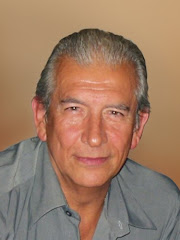She began CME physical therapy at the age of four and a half years old (in 2002), with the diagnosis of congenital cerebellar hypoplasia and deafness. To understand better Teya’s case we will briefly explain the cerebellum characteristics, information adapted from the NINDS web page:
“The cerebellum is composed by two large hemispheres, and is located in the inferior posterior portion of the head, directly dorsal to the brainstem and pons, inferior to the occipital lobe. Cerebellum who means “little brain“ in Latin is a region of the brain that plays an important role in the integration of sensory perception and motor output. Many neural pathways link the cerebellum with the motor cortex which sends information to the muscles causing them to move, and the spinocerebellar tract which provides feedback on the position of the body in the space or proprioception. The cerebellum integrates these two functions, using the constant feedback on body position to fine-tune motor functions. Because of this “updating” function of the cerebellum, lesions within it are not so debilitating as to cause paralysis, but rather present as feedback deficits resulting in disorders in fine movement, equilibrium, posture, and motor learning”.
Teya was under the health care system in her country since a very early age, receiving all the necessary services including conventional physical therapy, and during the previous months before the beginning CME physical therapy she was receiving training to use a walker frame, furthermore the mother was advised to apply for a wheel chair, because none of the professionals involved in Teya‘s care considered her to be a candidate for motor independence, probably due to the severe diagnosis and poor aging-developmental-evolution. But the mother had the courage to disregard standard motor therapy and to find CME physical therapy, and decided to make a big effort to bring her daughter to Santiago, Chile, to take intensive CME physical therapy with Ramon Cuevas.
In the initial assessment of Teya in August 2002, she stopped getting 3 or complete response in item “28: Standing posture by hands on wall”. She got a “1 or minimal response”; because she was afraid to keep standing position only by hands on the wall. This item needed the basic balance control response of keeping the center of gravity inside the base of support without the “grasping” compensation, which is the first immature reaction that motor delayed children do in order to keep standing posture and taking steps. Teya was never before placed in a standing position without grasping a solid support. In item “32: Steps by one hand-arm horizontal” she got a zero and then also a zero in item “34: Standing posture free”. Her final motor level from assessment was equivalent of 10 month of age, being 4 ½ years old.
Luckily, since the first set of intensive physical therapy sessions Teya showed good tolerance to the new therapy responding very well to the exercises, but due to her size and total lack of control of balanced reactions, it was very hard for the mother and for the therapist to provoke functional responses holding such a tall girl by the ankles. However, it was a worthy effort because slowly but steadily Teya never stopped progressing since the beginning of CME physical therapy, and currently she can stand up from the floor by herself, walk freely on the street almost an unlimited distance turning to any necessary direction with functional balance control and step up and down small stair cases.
Teya is still dealing with severe cerebellum atrophy and deafness and is not completely independent yet, but considering the way in which she manages strolling around after the last set of intensive therapy (March 2006), the option to become totally motor independent despite the diagnosis is increasing every single day.

